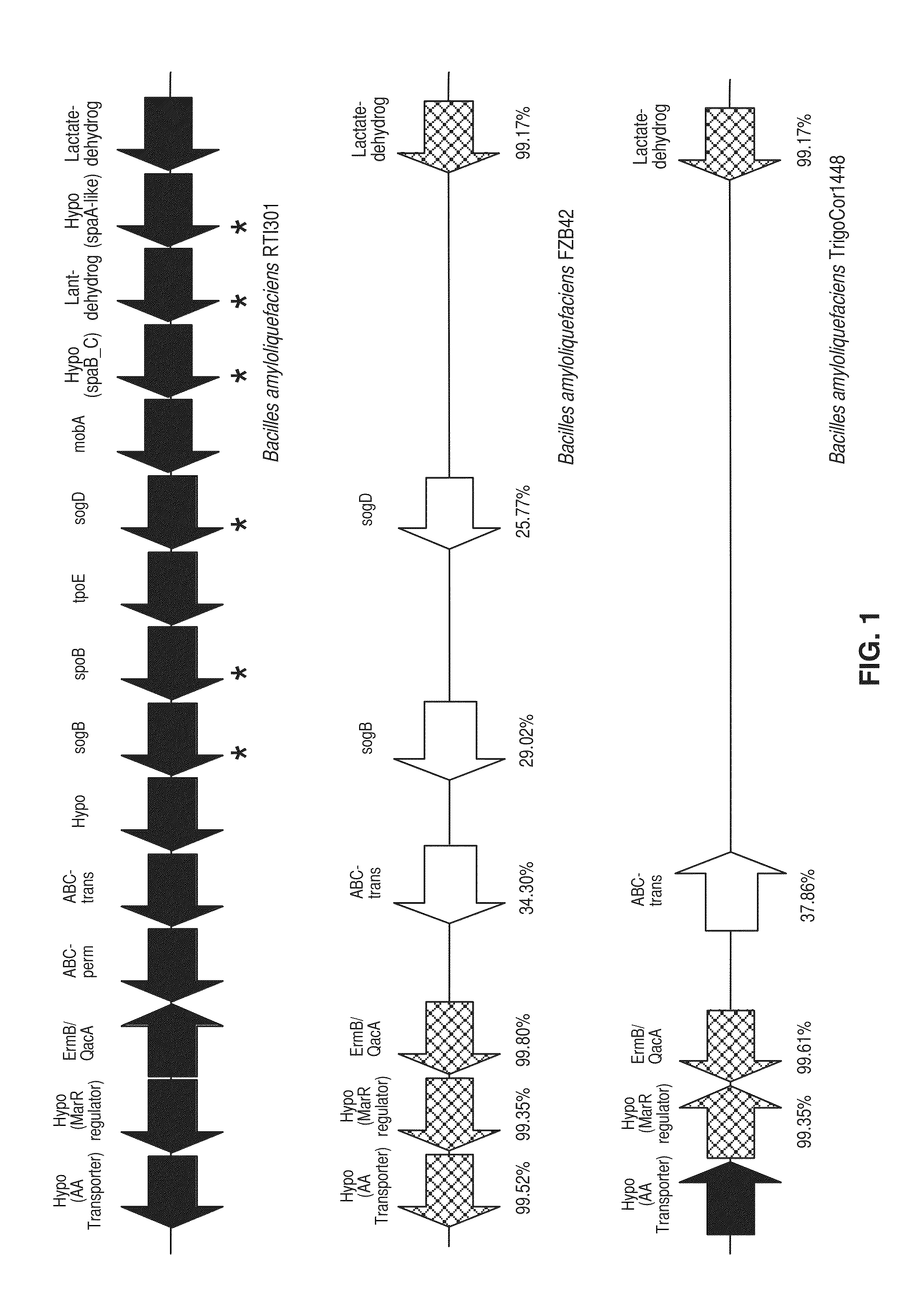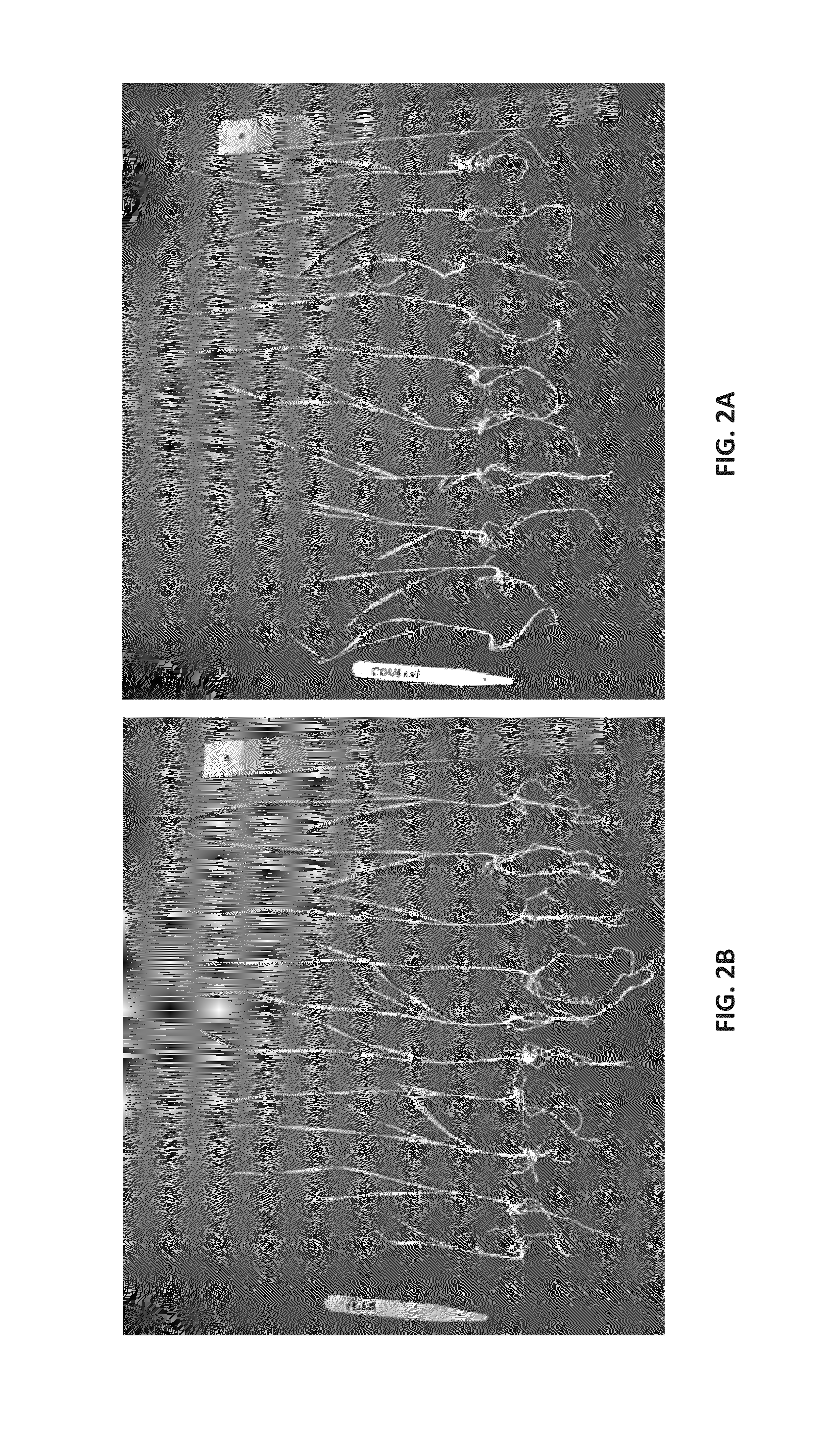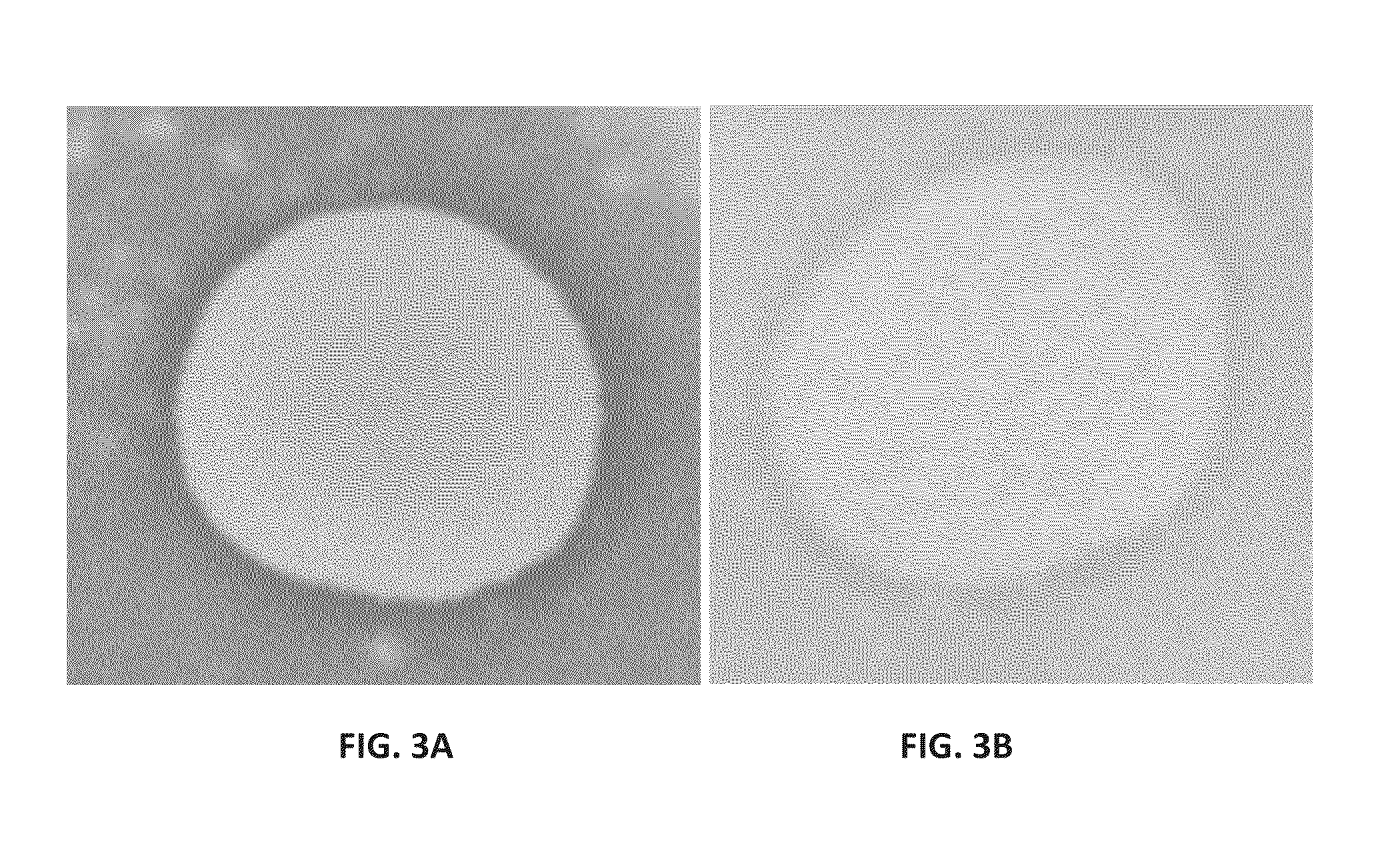Microbial compositions and methods of use for benefiting plant growth and treating plant disease
a technology of plant growth and composition, applied in the direction of biocide, application, waste based fuel, etc., can solve the problems of affecting the economic benefits of agriculture and horticultural industries, affecting the ripening of fruits, and stimulating plant growth and slowing fruit ripening,
- Summary
- Abstract
- Description
- Claims
- Application Information
AI Technical Summary
Benefits of technology
Problems solved by technology
Method used
Image
Examples
example 1
Identification of a Bacterial Isolate as a Bacillus Subtilis Through Sequence Analysis
[0107]A plant associated bacterial strain, designated herein as RTI477, was isolated from the root of Moringa oleifera grown in North Carolina. The 16S rRNA and the rpoB genes of the RTI477 strain were sequenced and subsequently compared to other known bacterial strains in the NCBI and RDP databases using BLAST. It was determined that the 16S RNA partial sequence of RTI477 (SEQ ID NO: 1) is identical to the partial 16S rRNA gene sequence of Bacillus subtilis strain BSn5 (CP002468), Bacillus amyloliquefaciens strain NS6 (KF177175), and Bacillus subtilis subsp. subtilis strain DSM 10 (NR_027552). In addition, it was determined that the rpoB sequence of RTI477 has 99% sequence identity to known strains Bacillus subtilis PY79 (CP006881), Bacillus subtilis subsp. subtilis 6051-HGW (CP003329) (i.e., 99% sequence identity; 9 bp difference), and Bacillus subtilis subsp. subtilis BAB-1a (CP004405) (i.e., 99...
example 2
Identification of a Bacterial Isolate as a Bacillus Amyloliquefaciens Through Sequence Analysis
[0108]A plant associated bacterial strain, designated herein as RTI301, was isolated from the rhizosphere soil of grape vines growing at a vineyard in NY. The 16S rRNA and the rpoB genes of the RTI301 strain were sequenced and subsequently compared to other known bacterial strains in the NCBI and RDP databases using BLAST. It was determined that the 16S RNA partial sequence of RTI301 (SEQ ID NO: 3) is identical to the 16S rRNA gene sequence of Bacillus amyloliquefaciens strain NS6 (KF177175), Bacillus amyloliquefaciens strain FZB42 (NR_075005), and Bacillus subtilis subsp. subtilis strain DSM 10 (NR_027552). It was also determined that the rpoB gene sequence of RTI301 (SEQ ID NO: 4) has sequence similarity to the same gene in Bacillus amyloliquefaciens subsp. plantarum TrigoCor1448 (CP007244) (99% sequence identity; 3 base pair difference); Bacillus amyloliquefaciens subsp. plantarum AS43....
example 3
Genes Related to Biosynthesis of Antimicrobial Compounds in Bacillus Amyloliquefaciens RTI301 and Bacillus Subtilis RTI477
[0109]Further sequence analysis of the genome of the Bacillus amyloliquefaciens RTI301 strain revealed that this strain has genes related to a number of biosynthetic pathways for production of molecules having antimicrobial properties. These include the biosynthetic pathways for subtilosin, surfactin, iturin, fengycins, amylocyclicin, difficidin, bacilysin, bacillomycin, and bacillaene. In addition, genes related to lantibiotic biosynthesis were discovered in the RTI301 strain, for which there are no homologues in the other closely related Bacillus amyloliquefaciens strains. This is illustrated in FIG. 1, which shows a schematic diagram of the genomic organization surrounding and including the lantibiotic biosynthesis operon found in Bacillus amyloliquefaciens RTI301. In FIG. 1, the top set of arrows represents protein coding regions for the RTI301 strain with re...
PUM
| Property | Measurement | Unit |
|---|---|---|
| dry weight | aaaaa | aaaaa |
| dry weight | aaaaa | aaaaa |
| weight | aaaaa | aaaaa |
Abstract
Description
Claims
Application Information
 Login to View More
Login to View More - R&D
- Intellectual Property
- Life Sciences
- Materials
- Tech Scout
- Unparalleled Data Quality
- Higher Quality Content
- 60% Fewer Hallucinations
Browse by: Latest US Patents, China's latest patents, Technical Efficacy Thesaurus, Application Domain, Technology Topic, Popular Technical Reports.
© 2025 PatSnap. All rights reserved.Legal|Privacy policy|Modern Slavery Act Transparency Statement|Sitemap|About US| Contact US: help@patsnap.com



